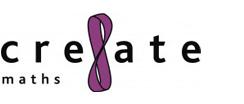GMC8: Communicating using mathematics
This list contains a collection of resources to help meet General Mathematical Competency 8 (GMC8). More resources to support T level Science can be found on our T Level science resource packages page.
GMC8 states:
Students are required to contribute to the production of reports and other measurement documentation by:
- using calculations, diagrams and data representations to support technical arguments
- reasoning with mathematics and drawing conclusions (for example, pass, fail and concept of shared risk)
- using industry standard conventions/notations as required
For example students may use mathematical processes: calculations, diagrams and data representations, to support the collection of clinical measurements by using mathematical processes to support technical arguments and by making summary judgements based on adequate and appropriate data. This may be achieved by using appropriate graphs and by organising information logically and coherently.
Communicating data to others
The ability to communicate ideas clearly is a very important skill for a mathematician to have. This resource is part of a full set of lessons looking at Healthy London air and using Statistics to analyse real life problems which can be found here
In this resource, students:
- Construct and interpret an appropriate graph, table, chart or diagram from given data; will have clearly explained what their data shows; and will have started to draw on their previous knowledge to make conclusions.
- Will compare and contrast what their different table, chart or diagram show; and written conclusions about why this is the case.
- Write an explanation about what the data shows.
cre8ate maths
This resource collection links real and significant mathematical thinking with authentic real world applications. Each resource comes with a prompt for students to consider and teacher guidance to help students to apply their mathematical knowledge to a real world scenario.
The collection includes the packages 'Growing Food' and 'Working with Chemicals', that include the resources:
- Helicopter Seeds- data collection and presentation
- Rabbits- creating a model to simulate a real situation
- Waste Management- analysing trends from data
AMP Practical Explorations
These AMP Practical Exploration activities ask students to consider a range of problems set in realistic contexts.
Each resource is suitable for group work, and cover the key processes:
- Representing - finding and using alternative ways to handle a large amount of information
- Analysing - working efficiently and systematically towards producing a clear plan
- Interpreting and evaluating - adapting solutions to take account of additional new constraints
- Communicating - producing a clear, accurate solutions with clear reasons
Bowland Maths: Assessment Tasks
Bowland Maths includes over thirty tasks designed to help assess students’ achievements and progression against key processes. To help with this assessment, each task contains sample work, and a 'progression table' showing how students’ work on the task can provide evidence of their progress with the four key processes: representing, analysing, communicating and reflecting.
These materials are also ideal for formative assessment that concentrates on providing the types of rich feedback that have been proven to help students improve their reasoning.
Statistics
This collection contains a range of activities all designed to enable students to use and apply statistics in unfamiliar contexts, including:
- Global child mortality- this task asks students to use spreadsheet data to create a presentation reporting on whether the UN millennium goal to reduce the under-five child mortality rate by two-thirds by the year 2015 has been realised
- Height and speed - This statistical investigation is based on the question: ‘Does the height of a tennis player affect the top speed of their service?’
- Mammals - This is an extended assignment that provides an opportunity for students to apply the full statistical problem-solving cycle, drawing on their knowledge of averages, scatter graphs, lines of best fit, outliers, missing data, cumulative frequency graphs, box plots, comparing sets of data, using spreadsheets to calculate statistics and present data, use of the internet to find information
- Microlives- In this task students use statistical techniques to evaluate a number of Public Health initiatives, using the notion of a ‘microlife’- a measure of the impact on an individual’s expected lifespan of various lifestyle choices
- Stroop effect - Students are asked to design and conduct an experiment to test the effect
- Who has the best results? - This task explores how standardised scores can be used to make comparisons



